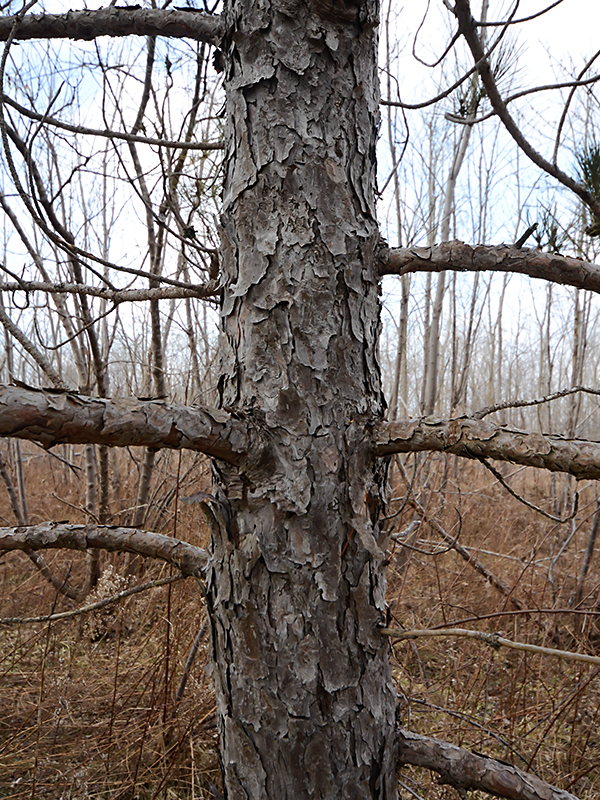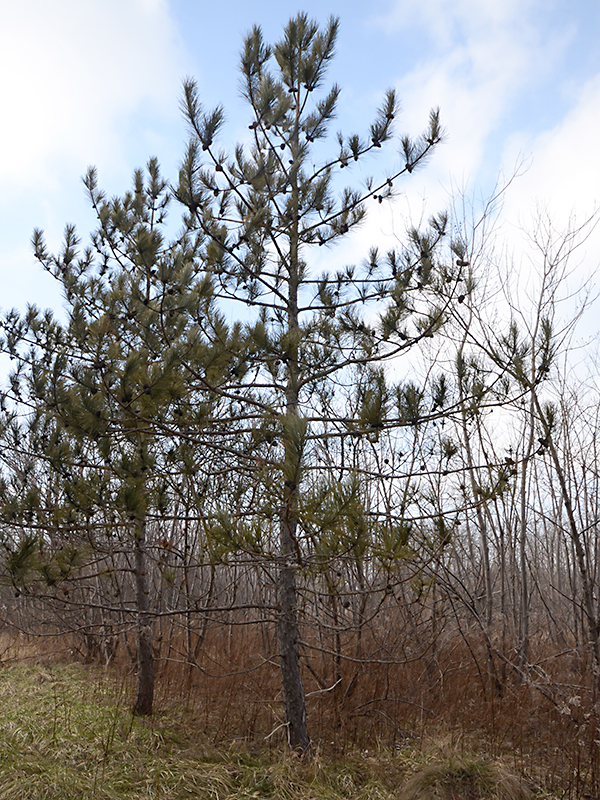| General Description | Red pine is a medium sized evergreen tree with medium to dark green needles that occur in dense turfs at the end of branchlets and a red-brown coloured bark. |
| ID Characteristic | It can be identified by the reddish colour of the bark or by bending the needles which will snap cleanly and easily.
|
| Shape | The crown is conical in young trees, taking on a more narrow oval shape with age. |
| Propagation | It is easily propagated by seed as they will germinate immediately upon sowing since they have no dormancy. |
| Cultivation | It requires full sun and grows best in a well drained sandy soil with low pH. Known to be cold tolerant, but dislikes intense heat. Not tolerant of salt. |
| Pests | There are quite a few insects known to feed on Red Pine, but only a few can cause mortality or serious damage. These include sawflies, Saratoga spittlebug, the Zimmerman pine moth and the red pine shoot moth among others. |
| Notable Specimens | The French River District, Ontario, Canada. |
| Habitat | Adapted to the colder climates, it can usually be found on sandy and rocky soils at higher altitudes |
| Bark/Stem Description | On young trees, the bark is orange-red and scaly. The older bark is a red–brown with a bit of silver–grey with thick scaly plates. |
| Flower/Leaf Bud Description | Buds are ovoid or conical, red-brown, approx 1.3 cm long, resinous and with loose scales. |
| Leaf Description | Shiny, medium to dark green brittle needles arranged in fascicles of two, 12-18 cm long. Straight or slightly twisted, densely arranged and persisting for 4 years. |
| Flower Description | Monoecious tree. The males are roundish and light red, found in large clusters at the branch tips. The females are short, red–brown cones. |
| Fruit Description | Light brown cone, ovoid in shape, 5 cm long and 3 cm wide found alone or in pairs. Appears in May or early June, matures in early summer in Ontario. |
| Colour Description | The foliage is medium to dark green all year long. The bark is red–brown |
| Texture Description | Medium. |

